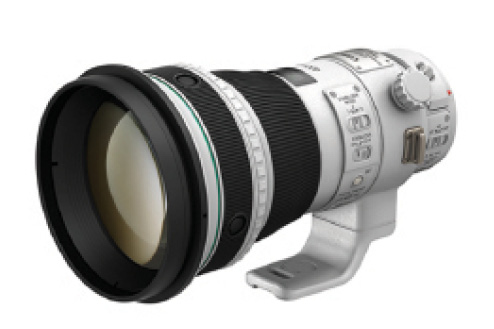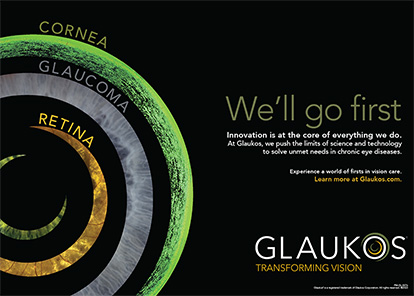All current options for presbyopia-correcting IOLs involve some form of optical compromise. Multifocal IOLs split light into two foci and also scatter some light energy, resulting in a loss of contrast sensitivity. Accommodating IOLs cause no loss of contrast sensitivity, but current designs do not provide sufficient near acuity for sustained, high-grade reading performance. A small degree of monovision is typically used to very effectively remedy this situation. Because presbyopia-correcting implants involve a significant financial contribution from patients; therefore, asking them to settle for an optical compromise can be tricky.
US PHYSICIANs’ USE OF PRESBYOPIA-CORRECTING IOLs
Although the IOLs available today in the United States provide very good results, according to a physician survey conducted at the 2014 American Society of Cataract and Refractive Surgeons Annual Meeting, these lenses account for only about 7.2% of cataract implants.1 This relatively low penetration level has remained stable for several years. Monovision with standard IOLs is three times more common than presbyopia-correcting IOLs, according to the same survey. Why? Is it a lack of access to advanced multifocal or accommodating IOL designs currently available only outside the United States?
When both US and non-US physicians were surveyed at the 2014 ASCRS meeting regarding the incidence of night vision aberrations in their multifocal IOL patients, both groups indicated that about 6% of their patients had significant night vision complaints. Although some newer multifocal implants are touted as having beaten the dysphotopsia problem, when carefully studied, many of these IOLs actually have dysphotopsia incidences that are similar to those seen in the original FDA trials of US-approved designs.2-6
A TOTAL NEAR VISION SOLUTION?
If a near vision solution could be developed that matched the distance performance of a monofocal IOL, it would disrupt the industry. One possible candidate is a new category of IOLs known as extended depth-of-focus IOLs (EDOF-IOLs). An example of this type of lens is the Symfony from Abbott Medical Optics, which is currently available outside the United States. This lens uses three principal optical strategies to achieve its near performance: spherical aberration control, a diffractive optic to expand a single focal zone as opposed to creating multiple foci, and chromatic aberration control.
Spherical aberration control has been extensively described previously, and it simply amounts to placing negative spherical aberration in an IOL to counteract the naturally occurring positive spherical aberration in the normal cornea. This is the strategy used by a variety of currently available IOLs, including the monofocal Tecnis (Abbott Medical Optics) and AcrySof (Alcon) IOLs.
Small-Aperture IOL Receives CE Mark
An extended depth-of-focus, small-aperture IOL from AcuFocus has received CE Mark approval in Europe. According to the manufacturer, the lens is designed to provide exceptional visual quality across a broad range of vision for presbyopic patients with cataracts.
Using the same principle established in the company’s flagship product, the Kamra inlay, the IC-8 IOL increases the population of patients who can benefit from small-aperture optics (data on file with AcuFocus).
By 2015, it is estimated that over 24 million cataract procedures will be performed worldwide, with nearly 4 million of those procedures taking place in Europe.1 Today’s treatment options for cataract patients are associated with some compromises, including an incomplete range of vision, degraded visual quality from induced glare and halos, and a loss of binocular contrast sensitivity. The maker states that this lens was designed to address these limitations and return high-quality, continuous functional vision to patients.
AcuFocus plans to make the IC-8 IOL available through a controlled release in select markets across Europe. The IC-8 IOL is not approved for use in the United States.
1. Market Scope. 2014 Comprehensive Report on the Global IOL Market. http://market-scope.com/products-page/ cataract-reports/2014-comprehensive-report-on-the-global-iol-market. Accessed January 6, 2015.

Figure 1. The Symfony IOL uses a diffractive optic to provide a single elongated focal zone as opposed to two distinct foci.

Figure 2. Canon’s EF 400-mm f/4L DO IS II USM features diffractive optics.

Figure 3. A diffractive optic combined with a refractive optic reduces chromatic aberration.

Figure 4. Symfony patients achieved 20/20 or better acuity throughout 1.50 D of defocus, and the range of vision increased 1.00 D throughout the defocus curve.

Figure 5. Symfony patients in the study achieved a mean intermediate visual acuity of better than 20/20 through their distance correction.
DIFFRACTIVE OPTICS
Diffractive optics have historically been used in IOLs to create two distinct foci; however, through a modified diffractive ridge design, the Symfony IOL has a single elongated zone of focus. Although the Symfony physically resembles a multifocal IOL, it is, in fact, not a multifocal (Figure 1). It is important to realize that the loss of contrast sensitivity seen in diffractive multifocal IOLs relates principally to the multifocality as opposed to the diffractive optic. Diffractive lenses are quite compatible with very high-performance optics. Diffractive lenses are commonly used in the professional telephoto lens designs available from the Canon camera company (Figure 2).7
Professional photographers like diffractive optic designs for a variety of reasons, but an important one is chromatic aberration control. All IOLs create chromatic aberration when light gets dispersed, owing to the prismatic effect of the IOL. Peripheral light rays are bent differently based upon their wavelength, and short-wavelength blue light is bent more than long-wavelength red light. With a diffractive optic, however, the dispersion of light according to wavelength is exactly the opposite, with red light bent more and blue light bent less. When diffractive and refractive optics are combined, chromatic aberration is significantly reduced (Figure 3).
In a study comparing bilaterally implanted Symfony IOLs in 31 patients with bilateral monofocal Tecnis implants, Symfony patients achieved a mean visual acuity of 20/20 or better throughout 1.50 D of defocus (Figure 4). In essence, this means that a patient could be refracted to his or her best distance visual acuity and then overminused by an additional 1.50 D, but still maintain a visual acuity of 20/20 or better. As would be expected with this range of focus, intermediate vision was excellent. At 3 months postoperatively, Symfony patients in the study achieved a mean intermediate visual acuity of better than 20/20 through their distance correction (Figure 5). Although mean distance-corrected near visual acuity was only 20/30, the real surprise was that these Symfony patients experienced no difference in glare or halos compared with the monofocal controls.8,9
CONCLUSION
The near acuity of the Symfony EDOF-IOL does not match that of a multifocal but excellent intermediate vision with quality of vision matching that with a monofocal is a very compelling proposition. This new category of EDOF-IOLs has the potential to change the way surgeons approach presbyopia. If ophthalmologists can truly deliver functional near vision without optical compromise, I predict the presbyopia-correcting IOL category will grow tremendously.n
1. ASCRS Clinical Survey. Eyeworld. http://eyeworld.org/supplements/2014_ASCRS_clinical_survey.pdf. Accessed December 20, 2014.
2. Tecnis Multifocal 1-Piece IOL, Model ZMB00 [package insert]. Santa Ana, CA: Abbott Medical Optics, Inc.; 2009.
3. AcrySof IQ Restor [package insert]. Fort Worth, TX: Alcon Laboratories, Inc.; 2008.
4. Ebsaar Eye Surgery Center. http://www.ebsaar.com/publication/13-Visual_function.pdf. Accessed December 30, 2014.
5. van der Linden JM, van Velthoven M, hD, van der Meulen I, et al. Comparison of a new-generation sectorial addition multifocal intraocular lens and a diffractive apodized multifocal intraocular lens. J Cataract Refract Surg. 2012;38(1):68-73.
6. Maurino V, Allan BD, Rubin G, et al. Quality of vision after bilateral multifocal intraocular lens implantation: a randomized trial – AT LISA 809m versus AcrySof Restor SN6AD1. Ophthalmology. In press. http://dx.doi.org/10.1016/j.ophtha.2014.10.002.
7. Shankland S. Canon reveals details for future telephoto lens line. Cnet. September 14, 2014. Accessed December 22, 2014.
8. Abbott Medical Optics. Symfony simulated defocus curves. http://www.tecnisiol.com/eu/tecnis-symfony-iol.htm. Accessed December 29, 2014.
9. Abbott Medical Optics. Extended range of vision IOL 3-month study results (NZ). http://www.tecnisiol.com/eu/tecnis-symfony-iol.htm. Accessed December 29, 2014.
Steven J. Dell, MD
• director of refractive and corneal surgery for Texan Eye in Austin
• chief medical editor of CRST
• (512) 327-7000
• consultant to Abbott Medical Optics and Alcon


